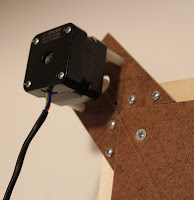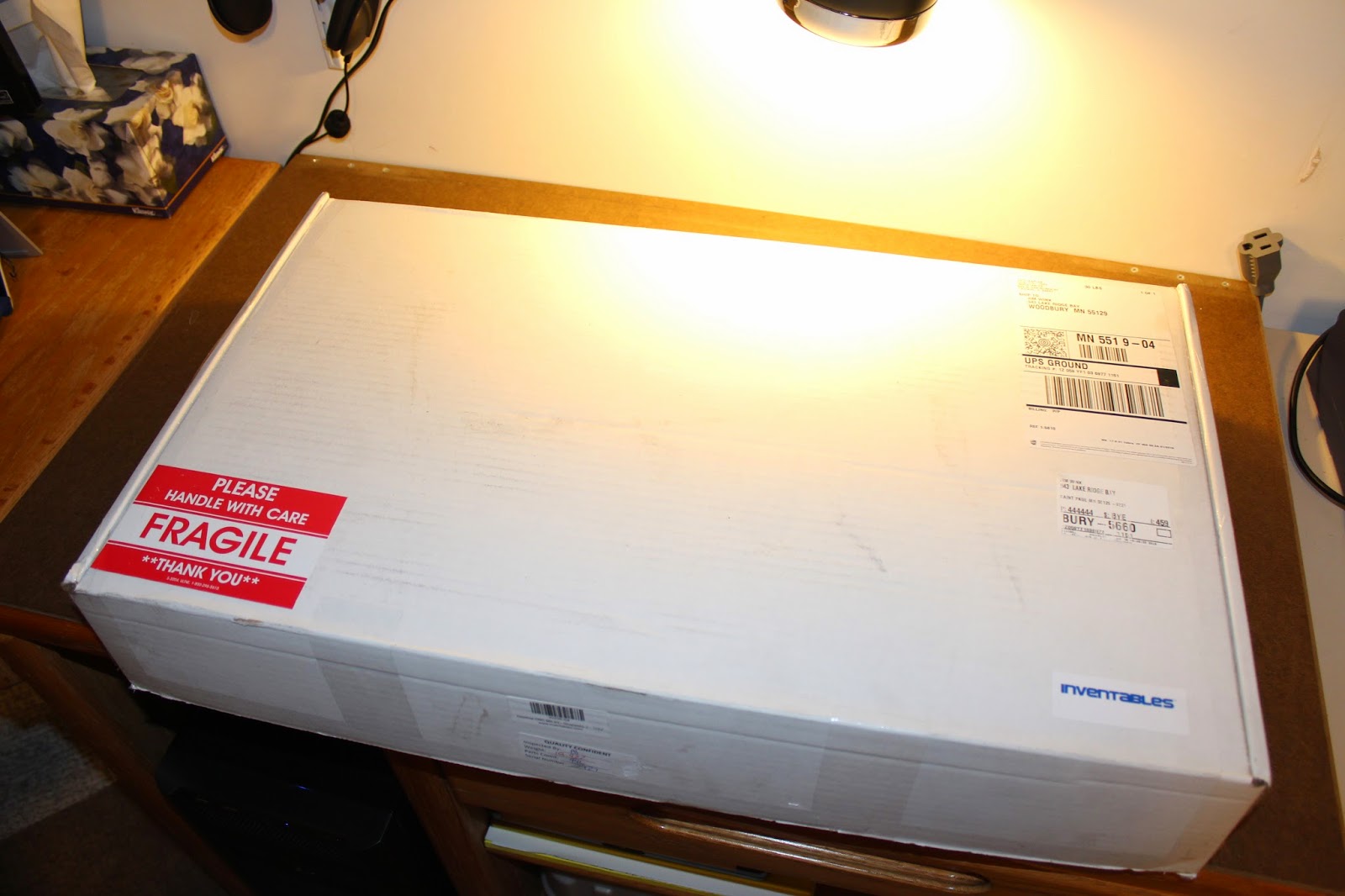The Shapeoko 2: Part 3 - Stuff
 My initial efforts at carving things with the Shapeoko 2 involved graph paper and manually entering coordinates into a text editor. My goal was to teach myself more about g-code and how it worked. I succeeded, though the process as a bit annoying and difficult. What I could produce this way as fairly simple, though yielded some interesting results.
My initial efforts at carving things with the Shapeoko 2 involved graph paper and manually entering coordinates into a text editor. My goal was to teach myself more about g-code and how it worked. I succeeded, though the process as a bit annoying and difficult. What I could produce this way as fairly simple, though yielded some interesting results.One of the first patterns was just an attempt and creating nesting squares and diamonds to see how a 1/8" mill bit would cut through craft plywood. Since it did pretty well, I ended up using craft plywood for a lot of my tests. It's cheap, sands well, and I can use one piece multiple times, provided my tests are really small.

 I ended up making 6 of the test pattern and gluing them into a cube. I'd put a photo of it here but I haven't taken one of it yet. My wife took it into school and might have left it there.
I ended up making 6 of the test pattern and gluing them into a cube. I'd put a photo of it here but I haven't taken one of it yet. My wife took it into school and might have left it there.Also shown here is a really tiny version. I used a printed circuit board milling bit that was 0.8 of a millimeter. This is a photo of the first attempt, though I have made several others that my wife intends to turn into earrings. Two are like this, and two are smaller that do not include the cutout corners.
This disc was an opportunity to test how to code circles in g-code. The command to do them is fairly simple. You code half or a quarter of the circle by setting the final destination in X/Y but then also include a radius for the circle. Something like:
G03 X3.0 Y3.75 R4.75 F500
Where G02 or G03 is clockwise or counter clockwise, the X and Y are the destination and the R is the radius. F500 in this case is the travel speed.
I have another like this with a string through it that got turned into a cat toy for when I visit some friends in Wisconsin.
After hand-writing some g-code files, I was curious how to make something more complicated. The Shapeoko wiki has some interesting articles about CAD and CAM, both of which include links to software, both free and for pay.
For my initial efforts I took images and converted them to black and white silhouettes. Shown here is the "Stillwater School District Pony" that I got off their site.
The image I took and converted to just black and white with a border around it. Then I imported the image into InkScape and used a feature in it to convert the image into vectors.
Inkscape does not do "center line" tracing. It draws a line around both sides of a given image. So I ended up deleting a lot of extra lines I didn't think I'd need.
There is an online tool I found much later called Rapidsizer that will take an image and do a center line trace. I will likely use it for a wolf image I am working on.
Here are a couple versions of that wolf.

One of the CAM tools provided by the folks at Inventables (I think) is called MakerCam. You can access it online through the link I added there, or you can actually download it. It's an Adobe flash file.
With it you can open vector graphics files, or the SVG filed produced by Inkscape, and the create tool paths.
With each set of vector graphics closed "line" segments you can initiate a number of different CAM operations, such as:
- Profile, or cutting outside or inside lines
- Pocket, or creating an inside cut to a certain depth
- Follow path operation - cut along the line
- Drill operation - not sure, never used

Once I get an image into an SVG file I typically use MakerCam to create the tool paths, like I did for this wolf image.
As with most of my tests here, I used 1/8" craft plywood. The difference between these two images is that one was cut all the way through, and the other, parts of it were cut to half the depth of the material. Then the outer edge was cut out.

 Or, another example, this Celtic knot image. The internet has, of course, a wide variety of images which can be quickly and rather easily converted into a set of instructions for carving something.
Or, another example, this Celtic knot image. The internet has, of course, a wide variety of images which can be quickly and rather easily converted into a set of instructions for carving something.Google Celtic knot and you'll find hundreds.
This one actually took a while to carve and did not actually cut all the way through in every case. Had to use an X-acto-knife for some of it.
To the right is a treble clef image. Was able to cut it quite small using the 0.8 mm PCB end mill.
Another... object I wanted to carve was a planetary gear. Not sure why, but I figured it'd be an interesting thing to try.
 After browsing through several forums and discussion sites I eventually settled on a design I found on Thingiverse.
After browsing through several forums and discussion sites I eventually settled on a design I found on Thingiverse.Most of the files I found on Thingiverse were STL files - still not sure what these are. Many are DXF, which is an Autocad format. Inkscape will, in some rare cases, load DXF files and allow you to convert them to SVG files.
I was able to do that with this planetary gear, and then later convert it to tool paths using Makercam.
Now I need to create some sort bracket to contain the gears. I might try to carve that out of acrylic now that I have a means of doing that. It involves the right kind of end mills and some careful work with the speed of the spindle as well as how fast you move through the material.
Anyway, at some point I'll start posting some of these g-code files somewhere in case anyone wants to try them out. Maybe on Github or some place all these young kids put their source code these days.



Comments
Post a Comment